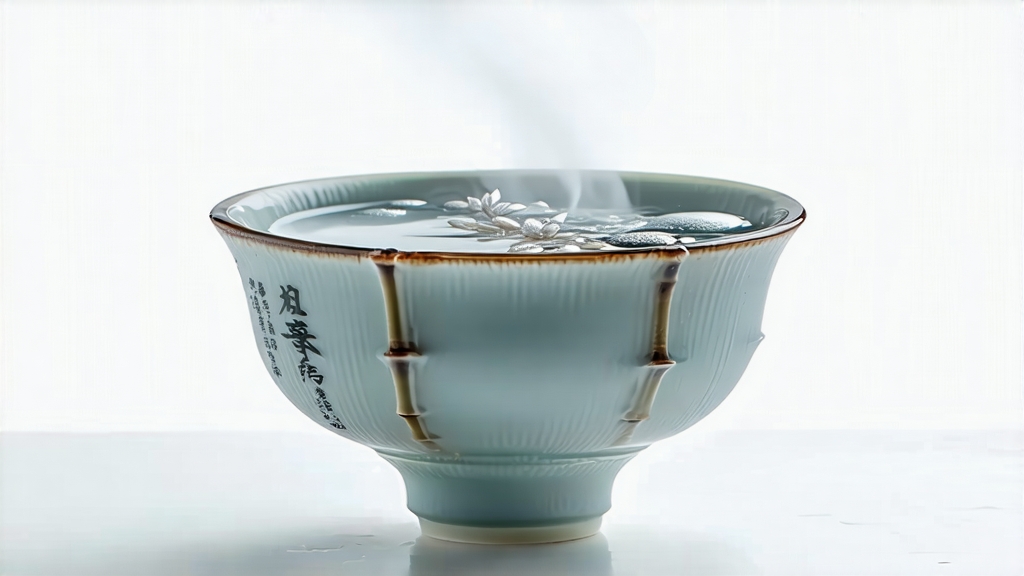
If green tea is the youth of Chinese tea and pu-erh its weathered sage, then Bai Hao Yin Zhen—Silver Needle, the noblest expression of white tea—must be the moonlight that never ages. First praised in the Song dynasty treatise “Da Guan Cha Lun” (1107 CE) but not formally named until the late Qing, this tea has always been a courtly whisper rather than a market shout. Legend says a tea maiden in Fuding pricked her finger on a thorn while plucking, staining the downy bud crimson; the emperor declared such “blood-tipped silver” too sacred for common pots, and so the buds were dried, not fired, to keep the gift of the gods intact. Whether myth or marketing, the story captures the reverence that surrounds the smallest, most innocent shoot of the tea plant.
Geography writes the first chapter of authenticity. Authentic Yin Zhen comes only from northern Fujian’s coastal hills—Fuding and Zhenghe counties—where granitic soils, 1600 mm of misty rainfall, and a diurnal swing of 10 °C coax the tea bush into hoarding amino acids. The native cultivar, Fuding Da Bai Hao, bears a fat spring bud sheathed in so much silvery pubescence that locals call it “the mink of tea.” One kilo of finished Silver Needle demands roughly thirty-eight thousand buds, all plucked before Qingming when the night temperature still dips below 15 °C, slowing oxidation enzymes and locking in a cool, cucumber-sweet fragrance.
Processing is disarmingly simple yet unforgiving. Once baskets of dew-weighted buds reach the cottage, they are spread one finger deep on bamboo trays and left to wither for thirty-six to forty-eight hours. No pan-fire, no rolling, no shaking—only the soft exhalation of mountain air and the occasional turn of the tea master’s wrist. The critical variable is moisture gradient: too fast and the bud keeps a grassy “green bone,” too slow and ambient yeasts bloom, gifting off-flavors of wet hay. On the second night, when the moon is high and humidity drops, the trays are slid into a low-temperature dryer (40 °C) for twenty minutes, just enough to fix the leaf at 8 % residual moisture while preserving the enzymes that will continue a glacial aging in later years. The result is a downy arrowhead, bone-white with the faintest pistachio stripe, that smells like fresh rain on peony petals.
Western tea charts often lump white tea under “minimally oxidized,” but Yin Zhen occupies a liminal zone of 5–10 % enzymatic browning, lower than green yet higher than the 0–2 % of a raw pu-erh maocha. This partial oxidation, arrested only by drying, explains the tea’s paradoxical depth: liquor the color of pale chardonnay that can still steep apricot ten infusions later. Microscopy reveals intact chloroplasts alongside ruptured vacuoles, a botanical split personality that releases L-theanine quickly while hoarding catechins for a slow, honeyed finish.
To brew Silver Needle without bruising its temperament, think of moonlight—cool, indirect, patient. A thin-walled gaiwan (120 ml) or a tall glass pot allows vertical expansion; buds must stand like miniature lighthouse spears. Use 3 g of leaf, water at 80 °C, and an initial fifteen-second rinse that is discarded not for cleanliness but to awaken the down, letting it trap a micro-coat of vapor for the first formal infusion. Steep one minute; subsequent infusions add ten seconds. The first cup carries a top note of fresh alfalfa and the powdered sugar scent of dragon fruit flower; the second introduces steamed edamame and a flicker of nutmeg; by the fifth, the liquor turns into white peach nectar with the slightest metallic echo of wet stone—what Chinese poets call “quarry memory.” Because the bud is intact, cellular rupture is gradual; even at the eighth infusion the leaves can be poured into a shallow saucer and nibbled as a mildly sweet, chlorophyll-rich salad.
Tasting notes are only half the story; texture is the hidden drama. High-grade Yin Zhen exhibits “silk suspension,” a colloidal viscosity caused by trichomes that detach and float, refracting light so the surface seems dusted with micro-moons.